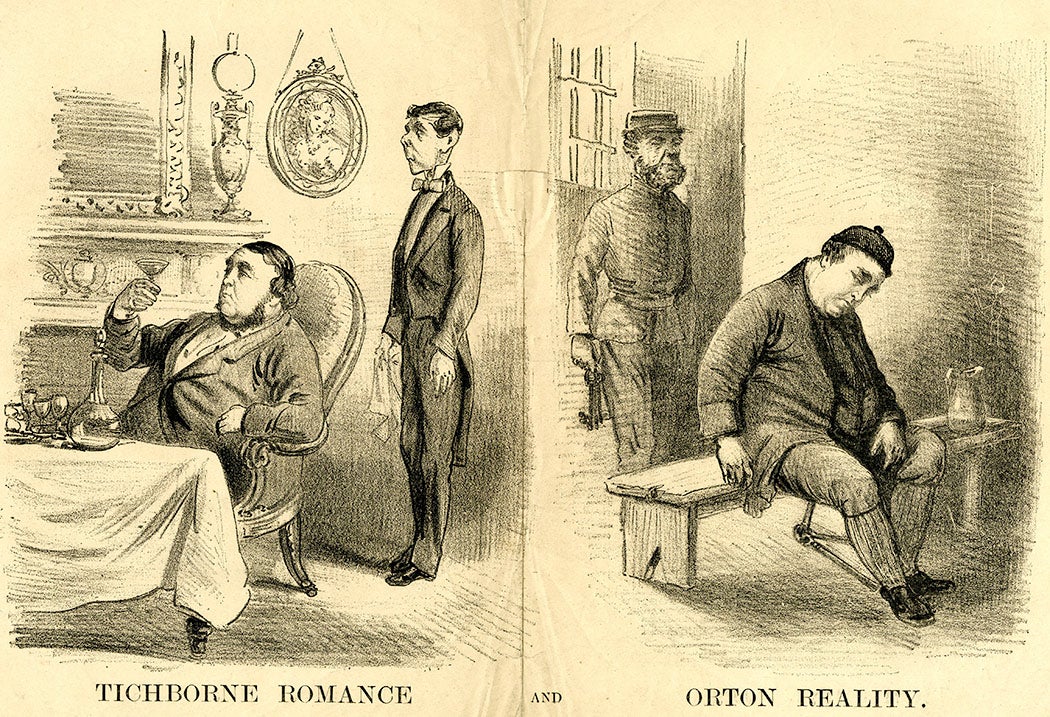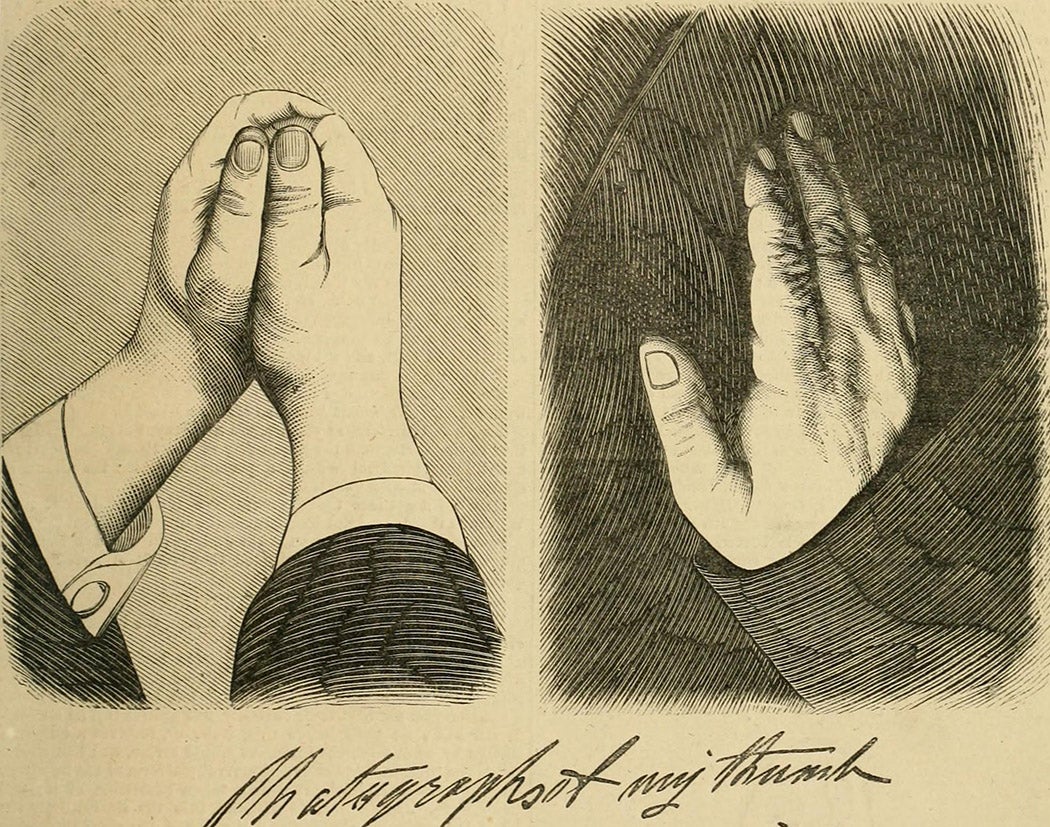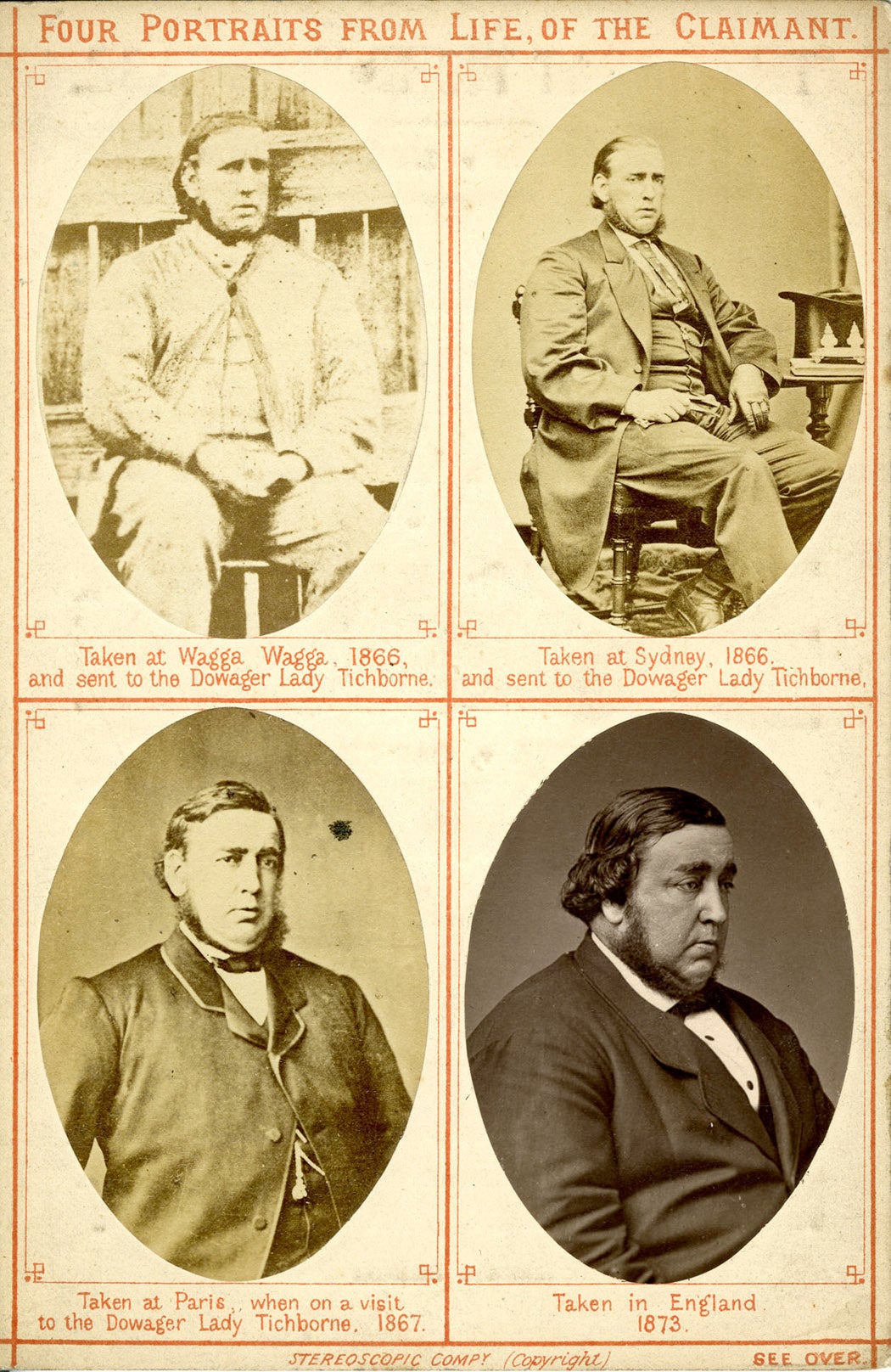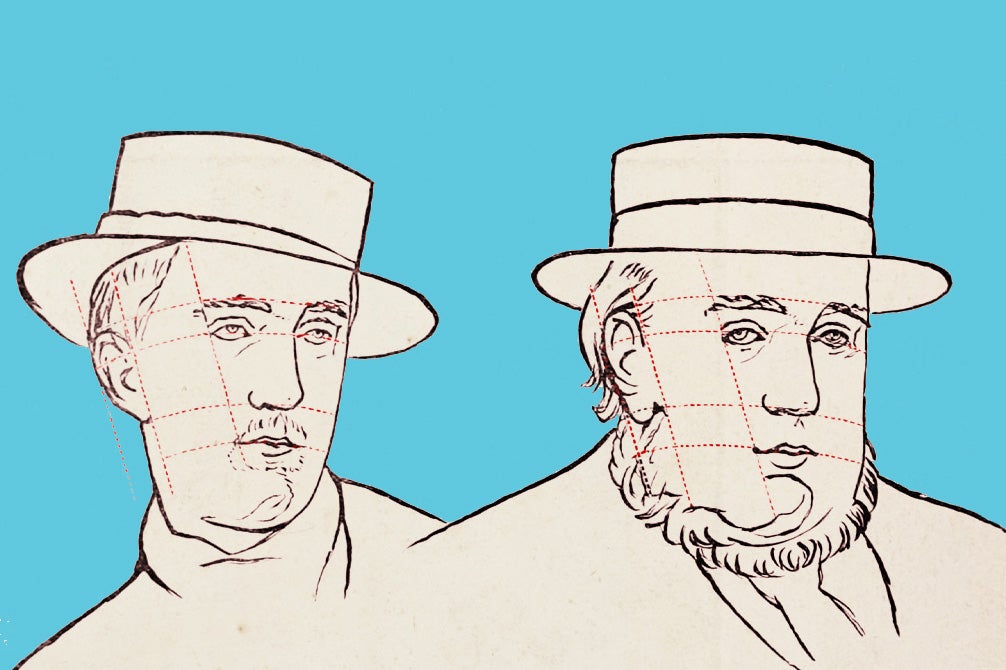Anna Delvey. Elizabeth Holmes. The Tinder Swindler. We are amidst a deluge of stories of imposters—tales of individuals pretending to be someone that they are not or having achieved something that they have not. But imposture is not unique to the twenty-first century. Consider Anna Anderson, the would-be Anastasia, or the legendary case of Martin Guerre, a sixteenth-century French peasant who disappeared for a number of years before apparently returning to his Pyrenean village and settling back in with his wife. Three years later, a familial inheritance dispute raised questions about whether he truly was who he claimed to be. However, the example of Martin Guerre is telling: in that case, it was a matter of small villages and big distances, in a time long before modern communication, transportation, and identification technologies.
The nineteenth century saw a rise in imposture similar to ours today—so much so that Bram Stoker, of Dracula fame, devoted a book to it. Amid that swell, the case of Arthur Orton, known as “The Tichborne Claimant,” offers telling insight into contemporary fakers. Money, fame, status, the desire to escape a dull existence: all are reasons that people assume a false identity. And specific conditions of modernity have not only made imposture tempting, they have enabled it.
Weekly Newsletter
Like the story of Martin Guerre, that of the Tichborne Claimant has exercised a durable fascination. Roger Tichborne, the heir to a landed English family, disappeared while on a sea voyage in 1854; most of his family presumed him dead. His French-English mother, who lived in Paris, did not. Believing him alive, she placed advertisements in newspapers, offering a reward for information about her son. In 1866, her prayers were answered: a robust fellow emerged from the Australian outback claiming to be the long-lost Roger. He no longer spoke the Queen’s English, exactly; and he remembered neither the French he had spoken to his mother, nor the Latin of his Catholic education. Still, she recognized him as her son—as did many family retainers and servants. More distant relatives did not, however, recognize him: how could this rough-speaking, very large man who had worked as a butcher be the delicate, aristocratic Roger? With a substantial estate at stake, they took legal action, which led to two of the longest trials in English history. First, there was a civil action in the Court of Chancery. When that action was withdrawn, the Claimant, as he had come to be known in the popular press, was prosecuted for perjury. He was convicted and sentenced to fourteen years hard labor.

The Tichborne case aroused massive interest. Ultimately, it ignited a social movement among the working classes, who supported the Claimant as one mistreated by the powerful and wealthy. Because the trials went on for so long, and in part because the Claimant toured in support of a bond issue to cover his legal expenses for the second trial, the case was before the public, in one form or another, for nearly three years. When the Claimant finally left prison, grayer and slimmer, he toured the country giving lectures.
Perhaps the Tichborne case seized the popular imagination because it was just so strange. “It was a concentrate of abnormalities, coincidences, and improbabilities bordering on the impossible,” observed historian Christopher Kent. A “sensation,” as the Victorians themselves put it, the story bore a remarkable resemblance to the popular sensation novels of the era, whose suspenseful plots hinged on matters of identity, domestic crimes, and legal loopholes. The Lord Chief Justice himself noted as much in his remarks to the jury in the criminal trial, going so far as to accuse the Claimant of plagiarizing from M.E. Braddon’s Aurora Floyd.
Perhaps, though, that strangeness wasn’t so strange at all. The Tichborne case encompassed just about every major thread coursing through Victorian society. In the aggressive efforts of the Doughty-Tichborne family to expose the Claimant as an imposter, there may be read a parable of aristocratic decline; that those who recognized him as Roger were mostly family servants and those who supported him included many working-class people told of the emergence of democratic sentiment in the era of the 1867 Reform Act. The Claimant had returned to Europe from the antipodes of the empire, purportedly a man so greatly changed that it might not be surprising that his more distant aristocratic relations failed to recognize him. The entire saga is inextricable from the social, cultural, and economic transformations of the middle and later nineteenth century, including the increased mobility provided by steamship and train. The case confronted the promises and limitations of technologies of identification; medical men examined the Claimant’s body but were reliant on reporting from the family about the details of Roger’s as the point of comparison. There was only one rather faded photograph of Roger Tichborne in existence and photographic evidence was not given weight in court. Supporters, however, compared the photograph of Roger to current images of the Claimant, insisting that close examination proved they were of the same person.

The Tichborne case underscored the ways in which the conditions of the modern world were challenging stable coordinates of identity. Aristocracies, as Kent remarks, generally documented themselves well, in order to ensure bloodline and prestige; regular people were much less tracked. Although the nineteenth century saw modern states deploying new technologies of identity and developing ever more intricate bureaucracies to track births, marriages, deaths, health data, and movements, these took a while to develop fully. Kent points out that “the Tichborne case was a challenge to both the new technology of identity and the old tradition of aristocratic visibility.” The Claimant shrugged off the apparent inconsistencies of manner, education, and style between himself and young Roger; people change over time, and maybe his time in the outback, by freeing him from the constraints of upper-class life, had permitted his authentic self to emerge. However, less subjective modalities of identification came up short.

Centrally, the Tichborne case was a media spectacle. In a flourishing and transnational print culture, coverage of high-profile trials was well known to increase newspaper circulation. Colorful characters, scandalous revelations (there was talk of tattoos, affairs, a genital “malformation”), and familial and class conflicts were then, as now, attention-grabbers. The case of the Claimant illustrates how a vigorous media culture could fill the gap between the identity logic of a deference society and a modern biopolitics. Readers of all interests and social positions could determine for themselves what version of the Tichborne story seemed most plausible to them. “So great was the interest in England over the case,” said one legal commentator, “that parents became estranged from children by differences in opinion produced by discussions over it. Friendships were broken and partnerships dissolved because of these differences.”
In the twenty-first century, modern states have become more proficient at keeping track of citizens; but those citizens are frequently even more geographically, and otherwise, mobile than their Victorian predecessors. In this way, Anna Delvey might be Orton’s true descendant in the annals of imposture. Putting twenty-first century mobility in service of a contemporary sense of ambition, the young woman from the lower middle class renamed herself and passed herself off as the daughter of a wealthy German businessman. Deceiving members of New York society, lawyers, and banks that she was soon to come into a trust fund worth tens of millions of dollars, she sought funding for a private upscale social club and art space on Manhattan’s Upper East Side. After stiffing a boutique hotel, she was arrested, convicted, and jailed. Even in our era of regulated passports and birth certificates, of Google and databases, it is still conceivable that a social acquaintance would be duped by this glamorous young woman with the hard-to-place accent and generosity when it came to clubs, restaurants, and vacations. But how is it that bankers and lawyers—and, in one case, a private jet company—didn’t catch on sooner? Maybe the best answer to that is that her story, her appearance, her manner seemed credible. In certain circles, it may be unseemly to question someone who claims wealth and position. If the upper classes of earlier eras were notably public, today privacy tends to be a perk of extreme wealth.

Anna Delvey’s is also a world where class markers are in crisis. In a country of vast wealth inequality, she set her sights on the narrowest sphere of the international one per cent. While the Tichborne Claimant often assumed a Popeye-esque “I am what I am” defiance in the face of those who would question his identity, Delvey deftly assembled the signifiers of upper-class status, from expensive hair to designer shoes. The Claimant embodied the contradictions of identity in the mid-nineteenth century, asserting that appearance and manner were contingent matters; for her part, Delvey understood that, in our era, appearance often passes quite effectively for reality. Both impostures tell a similar story of the ways the conditions we associate with modernity have sponsored a kind of fluidity of identity. It is cliché to argue this with regard to subjective self-perception and aspiration (Delvey imagined herself a glamorous entrepreneur; the Claimant the lost scion of a landed family). But both of these cases illustrate the ways in which the material conditions that define identity in eras of rapid-fire change can be exploited by those sufficiently daring—or delusional.
And this might be one reason that imposture makes for such compelling stories. The Claimant inspired novelists (Trollope among them, whose Is He Popenjoy? fictionalized the Claimant’s story) and, more recently, filmmakers. Anna Delvey’s story is the basis of a popular Netflix series, appropriately titled Inventing Anna. Both garnered substantial fan bases, consisting of people who might feel or have felt more admiration for their bold incursions into spaces of wealth and power, seen as a form of challenge to the gross inequalities of their respective societies, than unambivalent belief in their identity claims. There was even a Tichborne News and Anti-Oppression Journal which published a few issues. Now in immigration detention, fighting deportation, Delvey continues to enjoy a large social media following.
Stories of imposture, however, almost invariably end in scenes of exposure. The Tichborne case ended with a guilty verdict; the Claimant was not Roger, but Arthur Orton, also known as Thomas Castro. The chic heiress-entrepreneur Anna Delvey turned out to be Anna Sorokin, whose family emigrated from Russia to Germany when she was a child. Both had succeeded, for a bit, in making an art form of identity. In doing so, both exposed the fictionality of some conventional beliefs of their moments, whether those concerned Victorian aristocrats hanging onto their privilege or the foibles and vicissitudes of meritocracy. But to the extent that the exposure of imposters provides a satisfying terminus to exciting tales of identity-adventure, the moral of the story might be that, while modern identity may seem delightfully protean and free, in the end, all that freedom must be delimited, and identity needs to be fixed.







